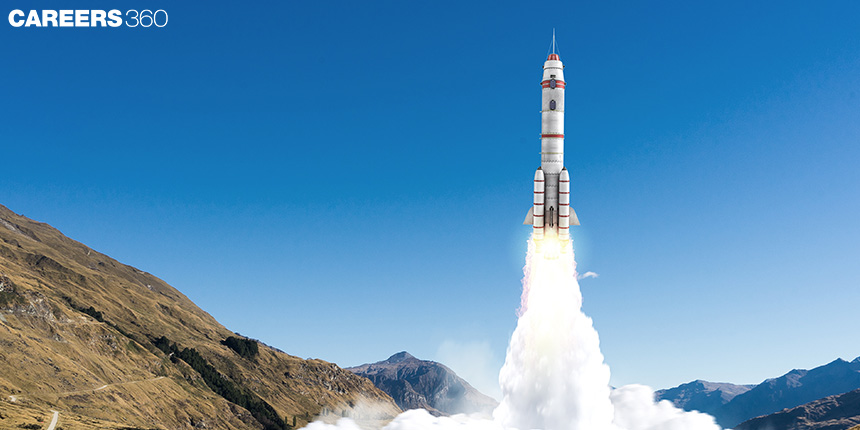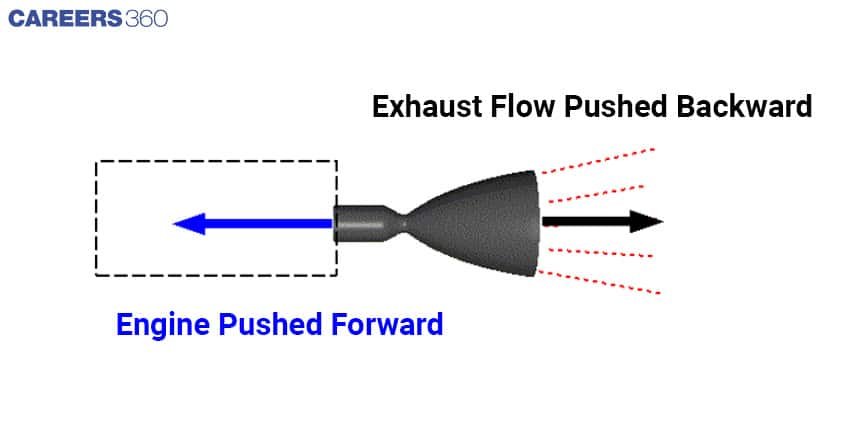Newton's Third Law Of Motion And Rocket Launching
Rockets are used as launch vehicles for spacecraft or satellites. They are also used as missiles and various other space applications such as to give supplies to International Space Stations and launch astronauts.

Do you know what the basic principle of launching the rocket is? The basic principle behind the propulsion of rockets is Newton's third law of motion. Let us see how Newton's third law of motion is applied in rocket propulsion.
Newton's Third Law
Newton's third law statement is studied in highschool. Class 9 NCERT Science, chapter on Force and Laws Of Motion describes all the three laws of motion with examples and formulas. Newton’s third law of motion states that for every action there is an equal and opposite reaction. That is if the first object applies a force on the second object, the second object also applies the equal force but opposite in direction. These action and reaction forces are known as force pairs and these forces are of the same type and opposite in direction. Let us see how Newton's third law works for rocket propulsion.
Rocket Propulsion
In case of a rocket launch, Newton’s third law is applied. The rocket engine produces exhaust gas which comes out of the nozzle of the rocket. In reaction to the force by exhaust gas an equal amount of thrust force is produced in the opposite direction. This thrust is responsible for the movement of rockets.

Rocket propulsion can be understood by taking an example of an air filled balloon. When the air filled in the balloon is released it flies away. Here the air exerts an equal amount of force in the opposite direction of expelled air from the balloon. The force of the balloon on the air and the force of the air on the balloon are the action reaction pair here. In case of rocket propulsion the exhaust gas flowing out and thrust are action reaction pairs. That is when the exhaust flow is pushed backward, the thrust pushes the engine forward.
Rocket Thrust Equation
If the exit velocity of gas is ve, mass flow rate is m’, exit area is ae, exit pressure is Pe and free stream pressure Po then thrust
F=m’ve + (Pe-Po)ae
The above given thrust equation works on both liquid and solid types of rocket engines.
The rocket propulsion is one of the examples of Newton’s third law of motion. Walking, swimming, pulling elastic bands etc are examples of Newton's third law of motion. There are many other daily life situations where Newton’s third law of motion is applied. Students can explore more real life examples of Newton's laws of motion.
Applications for Admissions are open.
As per latest syllabus. Physics formulas, equations, & laws of class 11 & 12th chapters
JEE Main Important Chemistry formulas
Get nowAs per latest syllabus. Chemistry formulas, equations, & laws of class 11 & 12th chapters
JEE Main high scoring chapters and topics
Get nowAs per latest 2024 syllabus. Study 40% syllabus and score upto 100% marks in JEE
JEE Main Important Mathematics Formulas
Get nowAs per latest syllabus. Maths formulas, equations, & theorems of class 11 & 12th chapters
